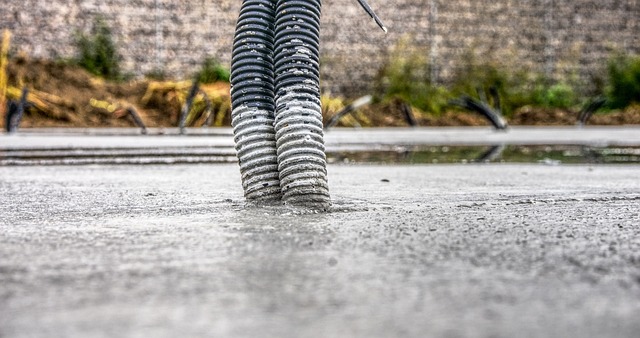Residential foundation stress indicators, such as cracks, uneven floors, and stuck doors/windows, signal potential structural integrity issues. Early detection through regular visual inspections, moisture meters, GPR, and thermal imaging is crucial for preventing severe damage and costly repairs. Soil conditions and hydraulic pressure significantly impact foundation health, with poorly compacted soils and overhead structures contributing to settlement and cracking. Proactive measures like re-leveling, underpinning, quality materials, proper drainage, waterproofing, and gutter cleaning are essential for achieving a stable residential foundation repair.
“Uncover the subtle signs of stress in your home’s foundation with our comprehensive guide. Understanding foundation stress indicators is key to early detection and prevention, ensuring the longevity of your residential structure. From recognizing common visual cues to exploring the science behind soil conditions and hydraulic pressure, this article equips homeowners with knowledge.
Learn about advanced non-invasive inspection methods, discover preventative measures, and explore strategies for repair, all tailored to reinforce the critical element of your home’s stability—its foundation.”
Understanding Foundation Stress Indicators in Residential Structures

Residential foundation stress indicators are crucial signs that can help homeowners identify potential issues with their home’s structural integrity. These indicators, often visible or measurable through simple inspections, play a vital role in early detection of problems that may require residential foundation repair. By understanding these signs, folks can take proactive measures to prevent more severe and costly damage.
Common stress indicators include cracks in the foundation walls or floors, uneven floors, stuck doors or windows, and bulging or distorted walls. In the world of residential foundation repair, recognizing these symptoms early is key to mitigating further damage. Homeowners should remember that even subtle changes can be a testament to underlying structural stress, necessitating professional evaluation and potential solutions.
Common Signs of Foundation Stress: What to Look For

Foundation stress in residential properties can manifest in various subtle signs, indicating potential structural issues that require immediate attention from professional foundation repair services. One of the most visible indicators is cracks in the walls, both inside and outside the house. These cracks might be hairline thin or wider, appearing in straight lines or branching patterns. Pay close attention to new or widening cracks, especially those near doors, windows, or corners, as these are red flags for foundation movement.
Another common sign to look out for is uneven floors or uneven doorways and window frames. Doors may stick or fail to close properly, while windows might be difficult to open or shut completely. Uneven surfaces can also cause noticeable gaps between walls and fixtures, such as baseboards or cabinets. Deformities in the foundation can lead to these issues, so it’s crucial to address them promptly to prevent further damage.
The Impact of Soil Conditions on Foundation Stability

Soil conditions play a pivotal role in determining the stability and longevity of residential foundation repair projects. The composition, moisture content, and compaction of soil directly influence the structural integrity of homes built on it. For instance, poorly compacted or water-saturated soils can lead to settlement and cracking, common issues that often necessitate foundation repair services. Over time, variable weather conditions can cause soil expansion and contraction, exerting pressure on underground structures.
Understanding soil characteristics is essential for predicting potential problems and implementing appropriate measures during construction and renovation. Professional residential foundation repair companies conduct thorough site assessments to evaluate soil conditions, ensuring that any necessary adjustments or reinforcement techniques are employed to safeguard the foundation’s stability and prevent costly repairs in the future.
Hydraulic Pressure and Its Role in Foundation Damage

Hydraulic pressure, a significant factor in foundation stress indicators, plays a critical role in the integrity and stability of residential structures. This force is generated by the weight of the soil and buildings above, pressing downwards on the foundation. In the context of Residential Foundation Repair, understanding hydraulic pressure is paramount as it can lead to various types of damage, such as settling, cracking, or even structural failure over time.
When a foundation experiences prolonged exposure to high hydraulic pressure, it may result in compression, causing the soil beneath the structure to compact. This compaction can induce significant stress on the foundation walls, leading to cracks and misalignments. Prompt identification of these stress indicators is crucial for implementing effective solutions before more severe damage occurs, ensuring the longevity and safety of residential structures.
Detecting Foundation Problems Early: Benefits and Methods

Early detection of foundation problems is a game-changer in the world of residential foundation repair. By identifying issues at their nascent stages, homeowners and professionals can avoid costly and extensive repairs down the line. Cracks in the foundation wall, uneven floors, and door or window misalignment are not just cosmetic concerns; they could be signs of structural damage caused by various factors such as soil movement, improper construction, or poor drainage. Regular visual inspections are a crucial method to catch these early indicators. Homeowners should look out for any visible cracks, inclines in the floor level, or doors and windows that don’t close properly.
Additionally, advanced technology like moisture meters and ground-penetrating radar (GPR) can further aid in detecting foundation problems. Moisture meters help identify areas of high humidity or water intrusion, which are often indicative of foundation issues. GPR, on the other hand, non-invasively scans beneath the surface to reveal any structural damage or voids in the foundation. These methods allow for proactive measures, enabling homeowners and contractors to implement effective solutions before the problem escalates, thereby saving time, money, and potential headaches associated with extensive residential foundation repair.
Non-Invasive Inspection Techniques for Residential Foundations

Non-invasive inspection techniques have revolutionized the way we assess residential foundation health, offering a safer and more cost-effective approach to identifying potential issues. Unlike traditional invasive methods that require extensive excavation or drilling, these modern techniques allow professionals to gather critical data without disturbing the structure. One such method is ground-penetrating radar (GPR), which uses electromagnetic waves to create detailed images of underground structures, including cracks, voids, and settlement patterns in foundations.
Another popular non-invasive tool is thermal imaging cameras, which detect temperature variations, helping to identify areas of structural distress or uneven settling. By analyzing heat distribution, these cameras can pinpoint problem spots that might be concealed by exterior finishes or difficult to access. This early detection through non-invasive methods is crucial in the realm of residential foundation repair, as it enables prompt addressing of issues, preventing further damage and costly repairs down the line.
Preventative Measures: Strengthening Your Home's Foundation

Preventative measures play a crucial role in maintaining the integrity of your home’s foundation, averting costly repairs down the line. Regular inspection is the first step; identify any signs of cracks, uneven floors, or shifting walls, as these could indicate underlying foundation issues. Addressing problems early through non-invasive methods like re-leveling and underpinning can prevent further damage caused by settling soils or hydrostatic pressure.
Investments in quality materials during initial construction or repairs are vital. Using the right types of concrete, ensuring proper drainage systems, and implementing effective waterproofing techniques significantly strengthen the foundation against environmental stressors. Additionally, maintaining adequate clearance around the perimeter of your home, removing excessive moisture, and regularly inspecting and cleaning out gutters contribute to proactive residential foundation repair, ensuring a stable and durable base for years to come.
